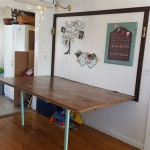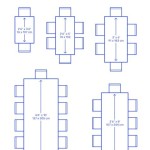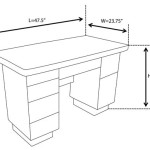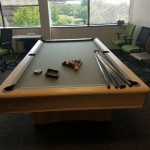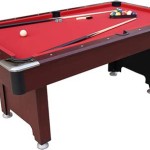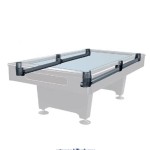Best Finishes for Dining Tables: A Comprehensive Guide
The dining table serves as a central gathering point in the home, accommodating meals, conversations, and various activities. Consequently, selecting the appropriate finish is paramount to ensure both aesthetic appeal and long-term durability. This article explores various dining table finishes, delving into their characteristics, benefits, and drawbacks, to aid in making an informed decision.
Choosing the right finish requires careful consideration of several factors, including the type of wood used for the table, the desired aesthetic, the level of protection needed, and the ease of maintenance. Different finishes offer varying degrees of resistance to scratches, stains, heat, and moisture, all of which are crucial for a table subjected to regular use.
Understanding the Importance of a Durable Finish
A dining table finish is more than just a visual enhancement; it serves as a protective barrier against the elements and the wear and tear associated with daily life. Without a proper finish, the wood itself is vulnerable to damage from spilled liquids, food particles, and abrasive cleaning materials. A robust finish, therefore, extends the lifespan of the table and preserves its original beauty.
The durability of a finish is measured by its ability to withstand scratches, impacts, heat, and moisture. Depending on the finish type, a table might be suitable for everyday use by a family with young children or better suited for a more formal dining setting where spills and heavy use are less frequent. Furthermore, the application of the finish itself is a critical factor in its overall performance. Multiple coats, properly applied, will always provide superior protection compared to a single, thin coat.
Consideration must also be given to the ease of repair. Some finishes are relatively simple to touch up or refinish, while others require professional intervention. Regular upkeep, such as cleaning with appropriate products and protecting the table from extreme temperatures, can also significantly extend the life of the finish.
Exploring Popular Dining Table Finishes
Several finish options are commonly used for dining tables, each offering a distinct set of advantages and disadvantages. These options include lacquer, varnish, polyurethane, oil finishes, shellac, wax, and specialized formulations like conversion varnish.
Lacquer: Lacquer provides a hard, durable, and clear finish, making it resistant to scratches and stains. It's often appreciated for its ability to enhance the natural beauty of the wood grain. However, lacquer can be sensitive to heat and certain chemicals, potentially causing discoloration or damage. Application typically requires specialized equipment and a controlled environment, making it more suitable for professional furniture makers rather than DIY projects.
Varnish: Varnish offers excellent protection against water and alcohol, making it a popular choice for dining tables. It creates a tough, glossy surface that is relatively resistant to scratches and heat. Varnish can be applied in multiple coats to build up a thicker, more protective layer. However, varnish can yellow over time, especially when exposed to sunlight. Modern formulations, such as spar varnish, offer increased UV resistance, mitigating this issue.
Polyurethane: Polyurethane is known for its exceptional durability and resistance to scratches, chemicals, and water. It is available in both oil-based and water-based formulations. Oil-based polyurethane offers superior hardness and durability but can have a strong odor and yellow over time. Water-based polyurethane is lower in odor, dries faster, and resists yellowing but may not be as durable as its oil-based counterpart. Polyurethane is a versatile option that can be applied with brushes, rollers, or spray equipment.
Oil Finishes: Oil finishes, such as tung oil and linseed oil, penetrate the wood, enhancing its natural color and grain. They provide a soft, matte finish that is easy to repair. However, oil finishes offer less protection against scratches, stains, and water damage compared to other options. They require regular reapplication to maintain their protective qualities. Oil finishes are often preferred for their natural look and feel and are a good choice for those who prioritize aesthetic appeal over maximum protection. They are fairly easy to apply and can be a good DIY option.
Shellac: Shellac is a natural resin that provides a glossy finish. It is known for its ease of application and quick drying time. Shellac can be easily repaired and blended with new coats. However, shellac is susceptible to water damage and alcohol spills, making it less suitable for dining tables used in high-traffic areas. Shellac is also relatively soft and can scratch easily. It is often used as a sealer under other finishes or for decorative purposes.
Wax: Wax finishes, such as beeswax, offer a very natural and soft appearance. They provide minimal protection against scratches and water damage and are primarily used to enhance the look and feel of the wood. Wax finishes require frequent reapplication to maintain their luster. They are often used in conjunction with other finishes, such as oil, to provide an additional layer of protection and sheen.
Conversion Varnish: Conversion varnish is a two-part finish offering exceptional durability and chemical resistance. It is a popular choice for commercial and high-end furniture due to its ability to withstand heavy use and harsh cleaning agents. Conversion varnish is typically applied by professionals due to its complex mixing and application requirements. While it provides superior protection, it can be more expensive and difficult to repair than other finishes.
Key Considerations for Selecting the Right Finish
Choosing the appropriate finish necessitates evaluating several crucial factors. These include the type of wood, the desired aesthetic, the level of durability required, and the ease of maintenance. The best finish will balance these factors to meet the specific needs of the dining table and the preferences of the owner.
Wood Type: The type of wood used for the dining table significantly influences the choice of finish. Some woods, such as oak and maple, have open grains that absorb finishes readily. Others, like cherry and walnut, have tighter grains that require different application techniques. Considering the wood's natural characteristics is crucial for achieving the desired look and protection.
Desired Aesthetic: The desired aesthetic plays a significant role in finish selection. Some finishes, like oil, enhance the natural beauty of the wood grain, creating a warm and inviting atmosphere. Others, like lacquer and polyurethane, offer a more modern and sleek appearance. The choice depends on the overall design style of the dining room and the personal preferences of the owner.
Durability Requirements: The level of durability required depends on the anticipated use of the dining table. A table used frequently by a family with young children will require a more durable finish, such as polyurethane or conversion varnish, to withstand spills, scratches, and impacts. A table used primarily for formal dining may be suitable for a less durable finish, such as shellac or wax, provided it is carefully maintained.
Ease of Maintenance: The ease of maintenance is another important consideration. Some finishes, like oil and wax, require regular reapplication to maintain their protective qualities. Others, like polyurethane and conversion varnish, are more resistant to wear and tear and require less frequent maintenance. The choice depends on the owner's willingness to invest time and effort in upkeep.
In summary, the optimal finish for a dining table is contingent upon evaluating the specific requirements of the wood, the intended aesthetic, desired level of protection, and the commitment to ongoing maintenance. By thoughtfully addressing these factors, a finish that balances beauty and functionality can be chosen, ensuring the dining table remains a cherished and durable piece of furniture for years to come.

Best Tabletop Finish Finewoodworking

How To Choose The Best Finish For Your Timber Dining Table Jarrimber

The Best Food Safe Finishes For Tabletops Lancaster Live Edge

How To Refinish A Dining Table Without Stripping The Original Coat

The Top Wood Finish Trends For 2024

The Best Way To Seal A New Wood Table Simply2moms

The Best Way To Paint A Dining Table And Chairs Confessions Of Serial Do It Yourselfer

Best Paint Finish For Dining Room Arinsolangeathome

How To Refinish A Dining Table Without Stripping The Original Coat

How To Refinish A Wood Table And Remove Water Stains Thrifty Decor Diy Organizing
Related Posts

